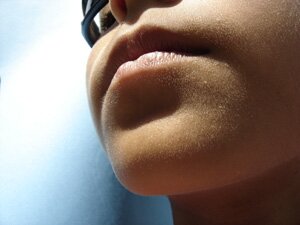Introduction to Tic Disorders
 Tic Disorders are a type of Neurodevelopmental Disorders. Neurodevelopmental means that symptoms affect the body's nervous system. Tic disorders are a result of problems with the body's nerves which transmit signals to and from the brain. Typically, these disorders begin in early childhood (between ages 4 and 6 years of age) and affect the child's social, academic or occupational functioning in some way. Occupational functioning means use of muscles, making sense of information seen/heard/touched, play skills, and activities of daily living (dressing eating, toilet usage, etc.).
Tic Disorders are a type of Neurodevelopmental Disorders. Neurodevelopmental means that symptoms affect the body's nervous system. Tic disorders are a result of problems with the body's nerves which transmit signals to and from the brain. Typically, these disorders begin in early childhood (between ages 4 and 6 years of age) and affect the child's social, academic or occupational functioning in some way. Occupational functioning means use of muscles, making sense of information seen/heard/touched, play skills, and activities of daily living (dressing eating, toilet usage, etc.).
All of the Tic Disorders share a common characteristic of having vocal or motor (physical) tics, which are sudden, rapid, recurring body movements or vocalizations (noises, words or phrases).
Tics are classified as either simple or complex and examples include:
- Simple motor tics, which are sudden, brief, repetitive bodily movements that involve a limited number of muscle groups. This could include eye blinking, facial grimacing, shoulder shrugging, and head or shoulder jerking.
- Simple vocal tics could include repetitive throat-clearing, sniffing, or grunting sounds.
- Complex tics are distinct, coordinated patterns of movements involving several muscle groups such as the head and shoulders, or arms and legs.
- Complex motor tics might include facial grimacing combined with a head twist and a shoulder shrug, sniffing or touching objects, hopping, jumping, bending, or twisting.
- Complex vocal tics include words or phrases.
- The most disabling tics include motor movements that result in self-harm such as punching oneself in the face or vocal tics including coprolalia (uttering swear words) or echolalia (repeating the words or phrases of others).
Tic Disorders are diagnosed by the type of tics that are present and how long they have been present. These include:
- Tourette's Disorder, (commonly referred to as Tourette's Syndrome) - includes multiple motor and one or more vocal tics that have been present for more than one year.
- Persistent (Chronic) Motor or Vocal Tic Disorder - involves single or multiple motor tics or vocal tics that have been present for more than one year.
- Provisional Tic Disorder - when single or multiple motor and/or vocal tics that have been present for less than one year.
- Other Specified Tic Disorder - when symptoms are like those of a tic disorder and cause significant distress or impairment in social, occupational or other functioning, but do not meet the full criteria for any of the 3 disorders above. This category is used when the clinician specifies the reason that criteria are not met, such as "with onset after age 18 years."
- Unspecified Tic Disorder - when symptoms are like those of a tic disorder and cause significant distress or impairment in social, occupational or other functioning, but do not meet the full criteria for any of the 3 disorders above. This category is used when the clinician chooses not to specify the reason that criteria are not met or when there is not enough information to make a more specific diagnosis.
